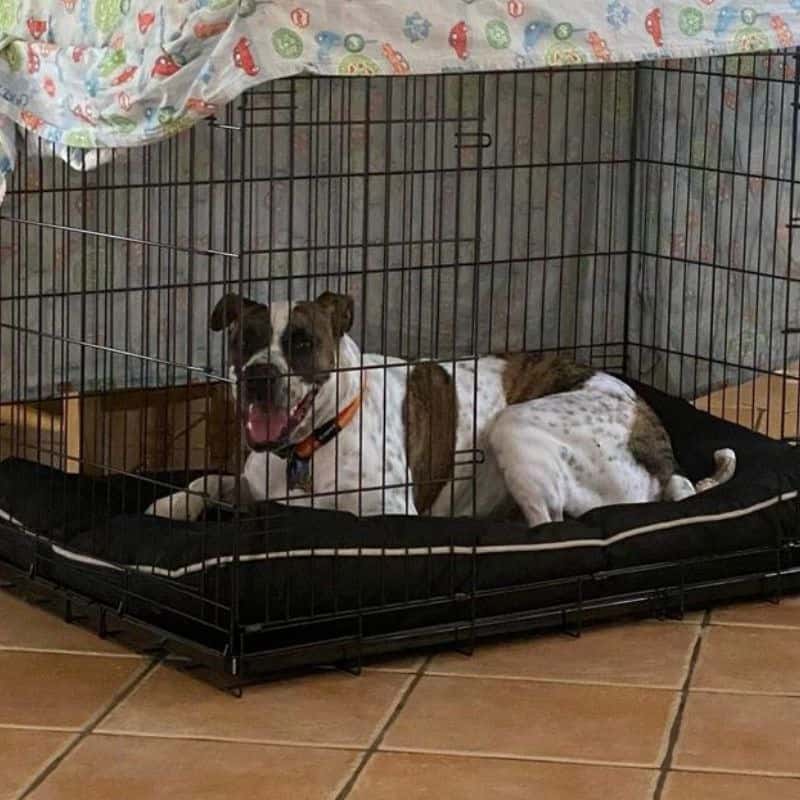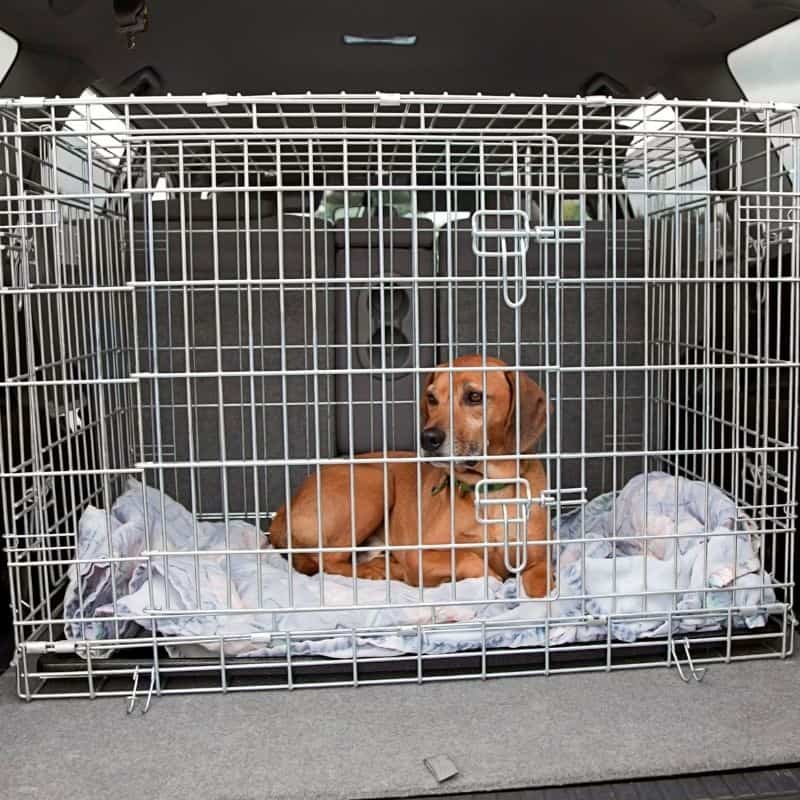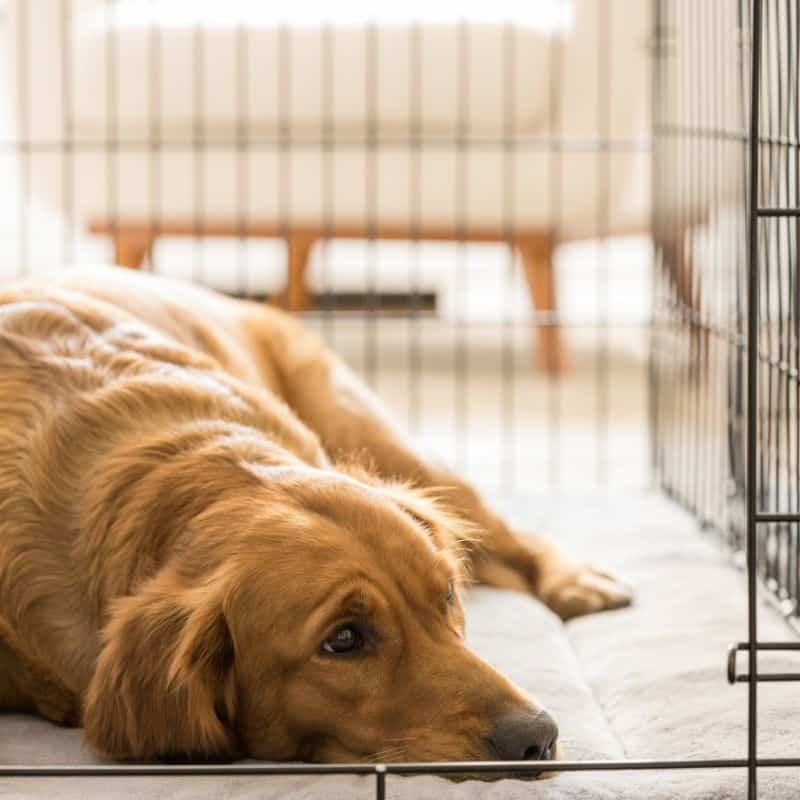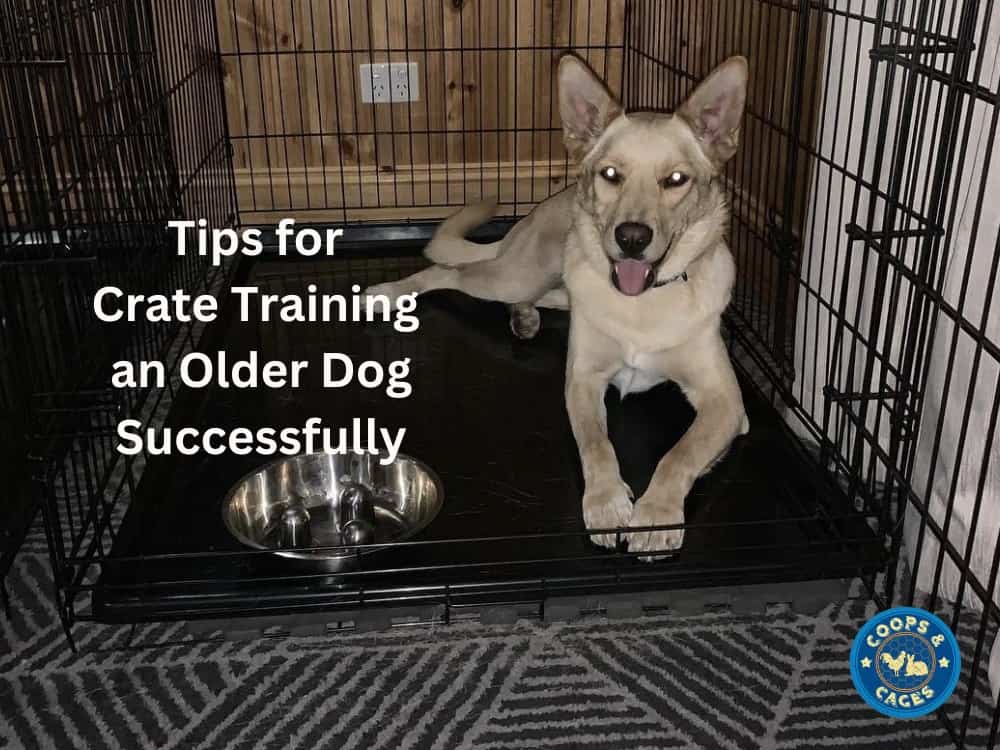Crate training for an older dog can be a challenging yet rewarding endeavour. It not only provides a safe haven for your adult dogs but also aids pet parents in managing behavioural issues.
In this blog post, we will explore the benefits of crate training and how it enhances the quality of life for your older pooch.
We’ll guide you through preparing your senior dogs for crate training, offering practical tips to make the process smoother.
You’ll learn about common mistakes owners often make during the training sessions and ways to avoid them.
Furthermore, choosing an appropriate size dog crate is crucial for successful crate training. We’ll delve into factors to consider when selecting a suitable crate size that ensures comfort while maintaining efficacy in training.
By understanding these aspects, you can ensure that crate training an older dog becomes a more comfortable and less stressful experience.
Benefits of Crate Training an Older Dog
Crate training isn’t just for puppies. Senior dogs can benefit from crate training too.
- Safe Space: A crate gives your dog a safe space to chill when they’re feeling anxious or overwhelmed. It can also be handy when you need to leave them alone for long periods. They can relax in their crate without causing chaos around the house.
- Improved Behaviour: By crate training your senior dog, you can help improve their behaviour. Dogs are natural den animals, so having their own little den can reduce anxiety and destructive tendencies.
- Safety During Travel: If you’re always on the go with your furry friend, crate training is a must. It makes car rides and flights safer and less stressful. Your dog will feel at ease in their familiar crate.
- Easier Vet Visits: Crate trained dogs find vet visits less distressing. They’re used to being in small spaces, so check-ups become a breeze for both you and your pup.

Preparing Your Dog for Crate Training
Before beginning the crate training process, ensure you have taken the necessary steps.
- Create a Positive Association with the Crate: Make the crate your dog’s happy place by filling it with extra treats, toys, and a comfy dog bed. Let them see it as a cosy den, not a doggy gaol.
- Choose the Right Location for the Crate: Find a spot for the crate where your dog can still be part of the family action. No solitary confinement here.
- Pick a Suitable Time to Begin Training: Start crate training when you have some time off work, so you can give it the attention it deserves. Do training when you are feeling calm and patient.
- Sizing Up the Right Crate: Get the right-sized crate – not too small, not too big. Just enough room to stand, turn, and stretch out. Visit Coops and Cages for help choosing dog crates.
Preparing properly before starting this journey will make the transition smoother for both you and your furry friend.
Crate Training Tips for Older Dogs
Here are some tips to make the training process easier and more effective:
- Start Slowly: Don’t rush your dog into the crate. Let them get used to the crate being in the room and wander up to it in their own time. When they first willingly enter the crate, leave the door open. Once they get comfortable in the crate, then you can slowly close the crate door. This process could take days or even weeks.
- Feed Your Dog Near the Crate: Giving your dog treats inside or next to the crate can create positive associations.
- Praise Good Behaviour: When your dog enters the crate willingly or relaxes inside without a fuss, shower them with praise and treats. Positive reinforcement is the key to successful training sessions.
- Maintain Consistency: Routinely have positive crate time every day. Practise makes perfect!

Bear in mind that every pup is unique, so a technique that may be successful for one pooch could not necessarily prove effective with another. Patience is the name of the game – progress, not perfection.
If you’re having difficulty, don’t hesitate to consult with a specialist in mature canines who will give individualised advice that will help make the process easier and less stressful for both of you. You can read more crate training tips here.
Training Tip:
Struggling to crate train your older dog? Take it slow, create positive vibes with extra treats and praise good behaviour. Consistency is key!
Common Mistakes When Crate Training an Older Dog
Crate training your old mate can be rewarding, but watch out for common mistakes pet parents make:
- Using the Crate as a Time-Out: Don’t lock your dog inside the crate as a punishment. Keep the crate a happy place, not a doggy gaol.
- Speeding Through the Process: Your dog won’t become a crate pro overnight. Take it slow and let them adjust in their own time. If your dog appears anxious, it may be a sign you are rushing training.
- Skipping the Pre-Crate Workout: A tired dog is a happy dog, and a happy dog is more likely to enjoy crate time. So, give ’em a good run before your dog enters the crate to avoid any pent-up energy meltdowns.
- Crate Size Mismatch: Size matters. Make sure the crate is just right, not too large or too small. Here at Coops and Cages, we stock 5 sizes of crate to suit every breed.
Choosing the Right Crate Size for Your Older Dog
Don’t overlook the importance of selecting a crate size that fits your dog properly. The right-sized crate will make your furry friend feel secure and content.
The crate should match your dog’s breed and size. It should be roomy enough for them to stand, turn, and lie down comfortably, but not so big that they will go to the toilet inside. Also allow enough room for a dog bed.

At Coops and Cages, we’ve got you covered with five crate sizes for every breed:
- Small 24″: Ideal for tiny breeds like Toy Poodles or Yorkshire Terriers. Available in 4 colours!
- Medium 30″: Perfect for French Bulldogs, Shih Tzus and Corgis.
- Large 36″: Suitable for Boston Terriers, Miniature Poodles and Cavalier King Charles Spaniels.
- XL 42″: Recommended for Border Collies, Labradors and Standard Poodles.
- XXL 48″: The pawfect choice for extra-large breeds like Mastiffs, Boxers and German Shepherds.
For more guidance on sizing, contact our Coops and Cages support team. They are always ready to answer any questions about finding the perfect enclosure for your adult dog.
FAQs in Relation to Crate Training an Older Dog
Can A Dog Be Too Old To Crate Train?
No, adult dogs are never too old for crate training – you can teach an old dog new tricks!
How Long Does It Take To Crate Train An Older Dog?
Older dogs typically take longer to train than young puppies.
The duration varies depending on the individual dog’s temperament and previous experiences, but generally, it takes several weeks of consistent training – patience is key.
Is It OK To Crate A Senior Dog At Night?
Yes, it is okay to crate a senior dog at night. Make sure the crate is cosy, a suitable size and the dog is comfortable in the crate.
If the dog appears anxious, it has not had enough training to be left alone in the crate yet.
Conclusion
When crate training an older dog, make sure you follow the right steps and use effective techniques to get your doggo feeling secure and content in their crate.
Remember, don’t use the crate as a punishment or leave your dog locked up for too long. And make sure you choose a crate that’s the right size, so your dog can stand up, turn around, and lie down without any discomfort.
With a bit of patience, consistency, and positive reinforcement, you’ll have your older pooch crate trained in no time.



